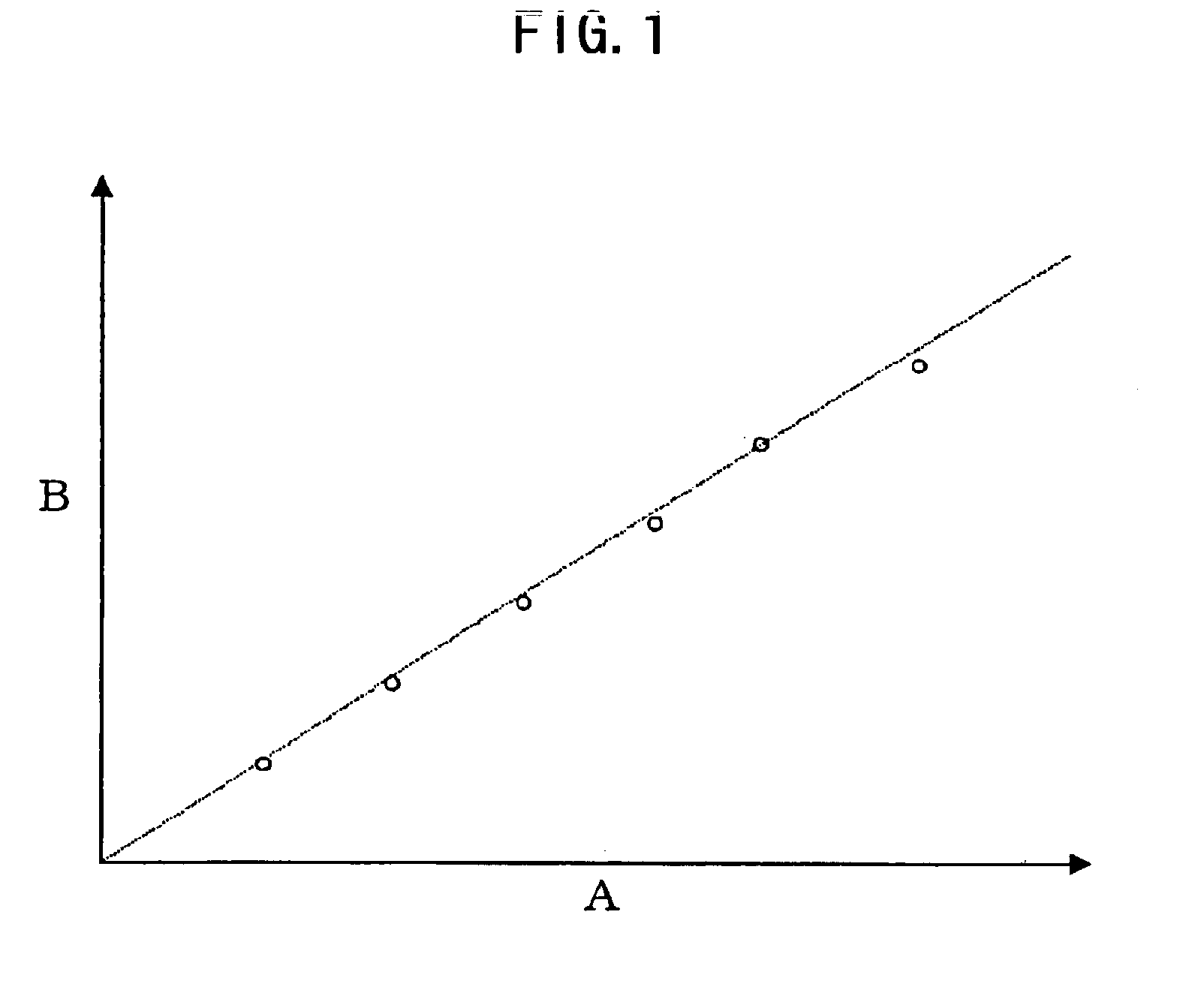Core material for vacuum heat insulation material, and vacuum heat insulation material
a heat insulation material and core material technology, applied in the direction of transportation and packaging, mechanical equipment, synthetic resin layered products, etc., can solve the problems of dust particles in the production and disposal process, material (2) is easy to handle but difficult to recycle, and the heat insulation properties of material (2) are greatly changed, etc., to achieve excellent heat insulation properties and compressive strength, light weight, and good heat insulation
- Summary
- Abstract
- Description
- Claims
- Application Information
AI Technical Summary
Benefits of technology
Problems solved by technology
Method used
Image
Examples
example 1
[0093] As a raw material resin, a polystyrene resin (impact resistant polystyrene made by A & M Styrene Co., Ltd., trade name: A & M polystyrene HI (grade name: H9407), Vicat softening point: 89.degree. C., total content of organic volatile matters: 350 ppm) was used. Talc as a cell regulating agent and methyl chloride as a blowing agent were added to the raw material resin in amounts of 10 parts by weight and 3.7 parts by weight, respectively, per 100 parts of the raw material resin, and a molded foam was prepared by the method A. The foaming temperature (temperature of the resin extruded from the extruder with a screw diameter of 150 mm) was set to 128.degree. C. Immediately after the production, the plate-shaped molded foam was moved to a room with a temperature of 23.degree. C. and a relative humidity of 50% and aged therein for 20 days. Then, the molded foam was measured for density, open cell content and total content of organic volatile matters. The results are summarized in ...
example 2
[0097] A molded foam was produced in the same manner as in Example 1 except that the amount of the cell regulating agent, talc was changed to 5 parts by weight. The foaming temperature (temperature of the resin extruded from the extruder with a screw diameter of 150 mm) was set to 128.degree. C. Then, a plate-shaped molded foam, a skin-free foam having a thickness of 10 mm, and a vacuum heat insulating panel were obtained in the same manner as in Example 1. Their physical properties are summarized in Tables 1 and 2. The result in Table 1 indicates that the skin-free foam is suitable as a core material for a vacuum heat insulating material.
[0098] The heat conductivity of a heat insulating panel obtained by vacuum packing another plate-shaped molded foam with the same gas barrier laminate film as used in Example 1 without removing the skin layers was measured. The result was almost the same as that of the insulating panel produced using the skin-free foam of Example 2.
example 3
[0099] As a raw material resin, a polystyrene resin (impact resistant polystyrene made by A & M Styrene Co., Ltd., trade name: A & M polystyrene HI (grade name: 433), Vicat softening point: 85.degree. C., total content of organic volatile matters: 250 ppm) was used. Talc as a cell regulating agent and methyl chloride as a blowing agent were added to the raw material resin in amounts of 5 parts by weight and 3.7 parts by weight, respectively, per 100 parts of the raw material resin, and a molded foam was prepared by the method A. The foaming temperature (temperature of the resin extruded from the extruder with a screw diameter of 150 mm) was set to 128.degree. C. Then, a plate-shaped molded foam, a skin-free foam having a thickness of 12 mm, and a vacuum heat insulating panel were obtained in the same manner as in Example 1. Their physical properties are summarized in Tables 1 and 2. The result in Table 1 indicates that the skin-free foam is suitable as a core material for a vacuum h...
PUM
| Property | Measurement | Unit |
|---|---|---|
| Fraction | aaaaa | aaaaa |
| Fraction | aaaaa | aaaaa |
| Fraction | aaaaa | aaaaa |
Abstract
Description
Claims
Application Information
 Login to View More
Login to View More - R&D
- Intellectual Property
- Life Sciences
- Materials
- Tech Scout
- Unparalleled Data Quality
- Higher Quality Content
- 60% Fewer Hallucinations
Browse by: Latest US Patents, China's latest patents, Technical Efficacy Thesaurus, Application Domain, Technology Topic, Popular Technical Reports.
© 2025 PatSnap. All rights reserved.Legal|Privacy policy|Modern Slavery Act Transparency Statement|Sitemap|About US| Contact US: help@patsnap.com

